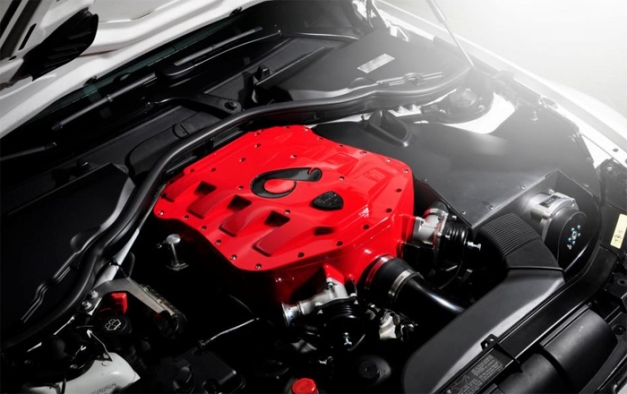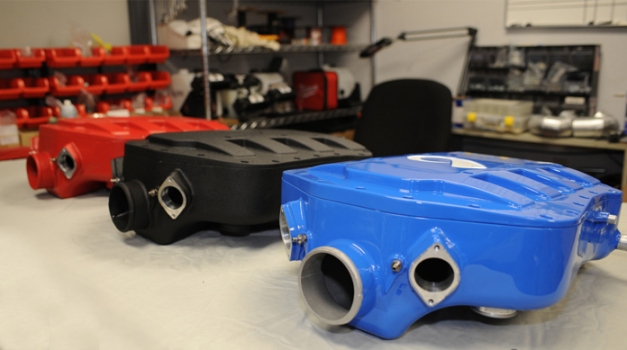Real Men Love (Power) Curves
If your local highways, tracks, and drive-thrus have been anything like the Active Autowerke shop recently, you already know that the latest (and possibly last) iteration of the BMW M3 is more popular than ever. The E90, E92, and E93 Chassis are more advanced, luxurious, and powerful than any 3-series before them, and as a result, have sold like wienerschnitzel…or whatever the German equivalent of hot cakes might be.
For most of their owners, the high-revving 400+ horsepower V8 S65 engine housed within these M3s is more than enough to get to and from a relatively boring commute. It’s even enough to give your boss’s corvette a run for it’s money on almost any stretch of pavement…not that we’d condone racing your boss in public. There’s a strong chance you might lose your Christmas bonus.
However, if 414bhp were enough for you, you wouldn’t be reading this blog. You wouldn’t be contemplating supercharging your M3. You wouldn’t be plotting alternate routes that just may have you running into your company’s CEO’s Ferrari for a friendly jaunt.
By now you already know that Active Autowerke offers an entire range of E9X M3 Supercharger Kits and Accessories. However, there’s so much behind the research and development of these kits that normally isn’t made public. These systems are extremely intricate, requiring years of small tweaks, and large re-designs. Now Karl Hugh, our Technical Director/Guru, is providing some in-depth details that will hopefully illustrate the blood, sweat, tears, and yes, even weinerschnitzel, that ultimately produced one of the highest-performing supercharger kits for the E9X M3 market. It all began with our core business philosophy: provide our customers with a quality product that meets or exceeds their expectations.
Why did you first decide to design a supercharger system for the E9X M3?
KH: As with every generation before it, the M3 is BMW’S flagship performance car. We knew it would be the best one yet, and we had a responsibility to tune it, and provide a solution to our customers who were hungry for more horsepower.
What was your ultimate goal with this supercharger kit?
KH: The goal we put on ourselves was to achieve a 50% increase in output…200 horsepower over the standard figure. We accomplished that with our level 2 kit, and on 91-93 octane pump gas available at any fuel station. We insisted that the kit be reliable, and maintain optimum power delivery. Our level 3 kit really exceeded expectations, and currently makes approximately 640 crank horsepower.
What was the biggest challenge you encountered when designing/building the kit?
KH: The intake plenum design. We went through tons of engineering drawings, including solid works and CAD files. The tooling required was particularly expensive. Once we neared a finalized version, we had a prototype manufactured in plastic before actual production, to use as a mock-up. The design we eventually ended up with is completely my own.
What exactly makes this kit different from others on the market?
KH: Our kit was designed with drivability in mind. This means the Active Autowerke supercharger system provides a much more usable power band, with more mid-range horsepower and torque. This comes in handy in race day situations, providing more power on tap across the rev-range, and when exiting corners. It’s also much more pleasurable to drive on the street, with no need to wait all the way until redline to really feel pushed back into your seat, like with other kits that are currently available. It also features an air-to-air intercooler, and the intake plenum design is aesthetically superior to any other available. All this adds up to a fully functioning kit that is at home on the street, race track, and even show circuit.
Explain what makes the intake manifold so unique?
KH: The design is bespoke of course. It truly has the “Active Autowerke” touch. We wanted to mimic a design that could be considered factory. However, it is still custom enough to appeal to the discriminating individual, who can order the plenum in any custom paint scheme.
Why did you decide to use a Rotrex blower for this kit?
KH: Adiabatic efficiency. The newest billet compressor wheels provide super cool compressor maps, and allow a much higher headroom for horsepower and torque, while remaining as cool as possible.
Talk a little bit about why the kit took so much time and research.
KH: Quality work requires quality time. In order to meet our goals, we had a number of obstacles that had to be overcome, and we did not want to rush this product to the market. We wanted a system that we could feature as everything that Active Autowerke stood for. The E9X M3 is not an easy car to work on, as there is so much technical hardware under the hood. Speaking of which, the sleek hood design leaves little room for larger injectors, oil coolers, and air filters. It was quite a challenge to have everything fit, and operating efficiently. Of course the proper ECU tuning also takes a long time to crack as well. Finally, there were serious costs involved to manufacture the actual hardware. The first plenum was over $45,000! Luckily, we offer the entire system for a much more affordable price.
Ok, so there really wasn’t any weinershnitzel involved. Not even a Jamaican patty mention….But if food is really on your brain, grab a Snickers. If you’re hungry for power however, now you know who to call.







Hey all! It says Level 3 put down 640 Chp. I have level 3 and put down 591 RWHP on Dyno Dynamics @ 8% correction. Much more than 640 CHP 😉
Hi Mark!
As you know, we’d rather be conservative in our estimates, and over-deliver to our customers…Plus, there are all kinds of different correction factors, ambient temperatures, etc. that can go into dyno numbers, so all we can report are what we ourselves experience in-shop.
Of course, if the kit outperforms those numbers, who are we to argue 😉